12 Ways to Revamp Your ELA Lessons For Next Year
Sharing is caring!
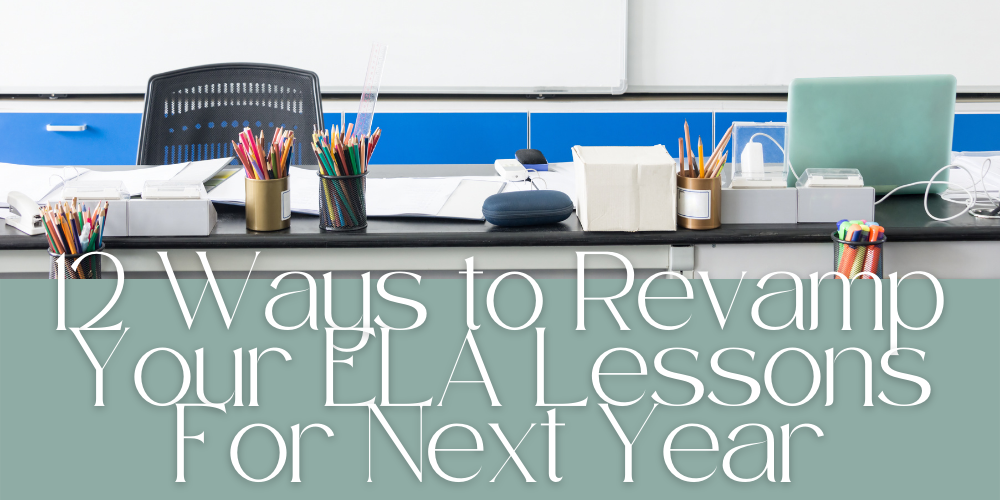
Summer break is a joyous time for any teacher, and should be filled with rest, relaxation and self-care, but if you’re like me, it’s also a great time to lesson plan without the stress of looming deadlines and other teaching tasks. There’s no better feeling than starting a new school year feeling prepared, confident and excited about your courses!
Ready to tackle your lesson planning? Great! I’ve teamed up with 11 other amazing educators to share our ideas to help you revamp your ELA lessons for next year.
1. ADD NONFICTION TEXTS TO YOUR UNITS

There are always so many things to consider when doing a unit overhaul. If you’re strapped for time or thinking your unit might just need a little face lift, why not consider places you can add nonfiction text?
Samantha from Samantha in Secondary is passionate about finding high-interest informational text to add to her own unit plans. Educational standards often require the teaching of nonfiction text and what better way to do it than to include pieces your students will actually enjoy?
Teaching nonfiction text allows you to incorporate strong close reading skills in your lessons. Samantha has a tried-and-true close reading process that she uses for all her informational text pieces. You can read all about her system here. Having a strong system in place means that you can consistently switch out the text and know that your students are hitting all the required reading and writing standards no matter what they are learning about.
Look at your own lessons. Where can you add a good nonfiction supplement? Is there a relevant biography that students could read? A text on a thematic topic like censorship? Is there something in the news recently that connects? You can also try browsing websites like Common Lit or NewsELA and see if they cover any topics that meet your needs.
If you’re looking for pre-made activities to add to your unit, Samantha has an entire section of her shop dedicated to nonfiction text activities. Check them out here. You’ll find sports figures, influential people, and her favorite- haunted places.
The possibilities are endless when coming up with strong informational text to include in your unit, sometimes all you need is a little inspiration.
2. DESIGN UNIT VISION BOARDS

Have you ever gotten halfway through a unit and wished that you had prepared for more supplementary texts? Felt like you lost the excitement and energy from when the unit began? Amanda from Mud and Ink Teaching knows this crisis all too well. There’s nothing worse than panic-searching for a Ted Talk that matches what’s happening in a story or forgetting why this novel was such an awesome idea in the first place.
To address this, Amanda started creating UNIT VISION BOARDS. They’re exactly what they sound like: a vision board (just like people make for goal setting) but for a unit plan. It’s a visual way of connecting all the pieces of a unit together. Take this example from Amanda as she envisions The Great Gatsby:
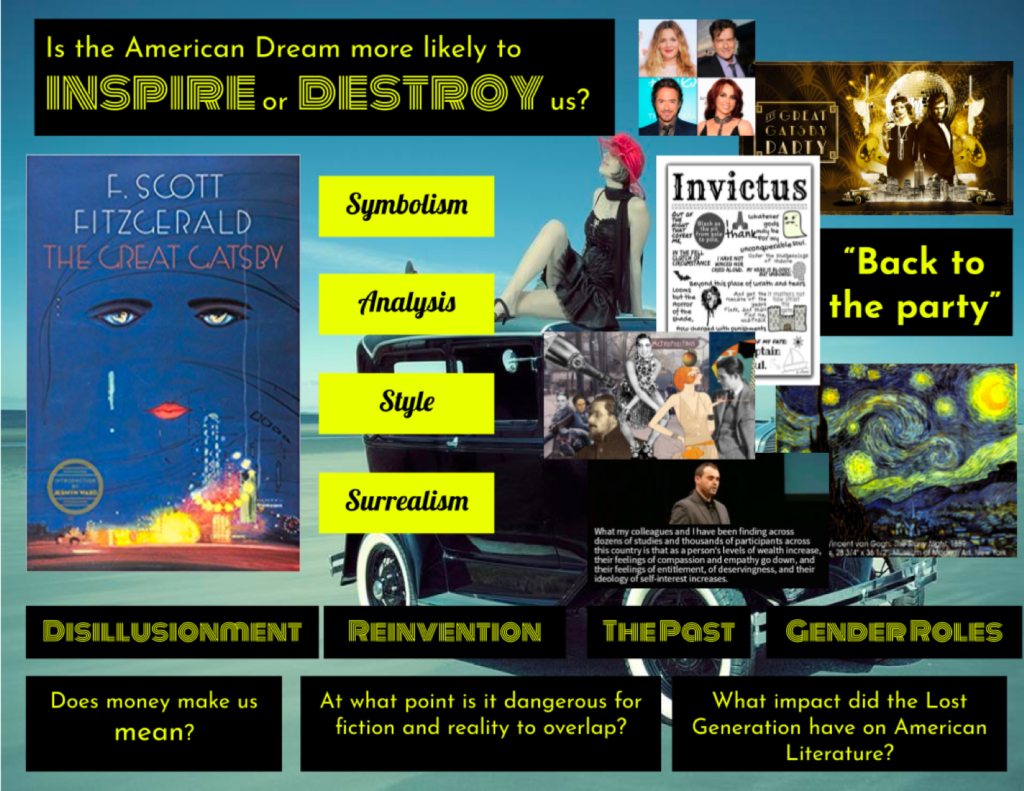
Amanda is sure to incorporate all of the most important parts of unit planning into the vision board:
- The unit Essential Question
- The central text
- Supplementary text ideas
- Color scheme / mood to set for the unit
For even deeper insight, check out the episode of The Cult of Pedagogy podcast where Amanda was interviewed all about the process!
3. ANALYZE YOUR CLASSROOM LIBRARY AND CURRICULUM FOR Representation
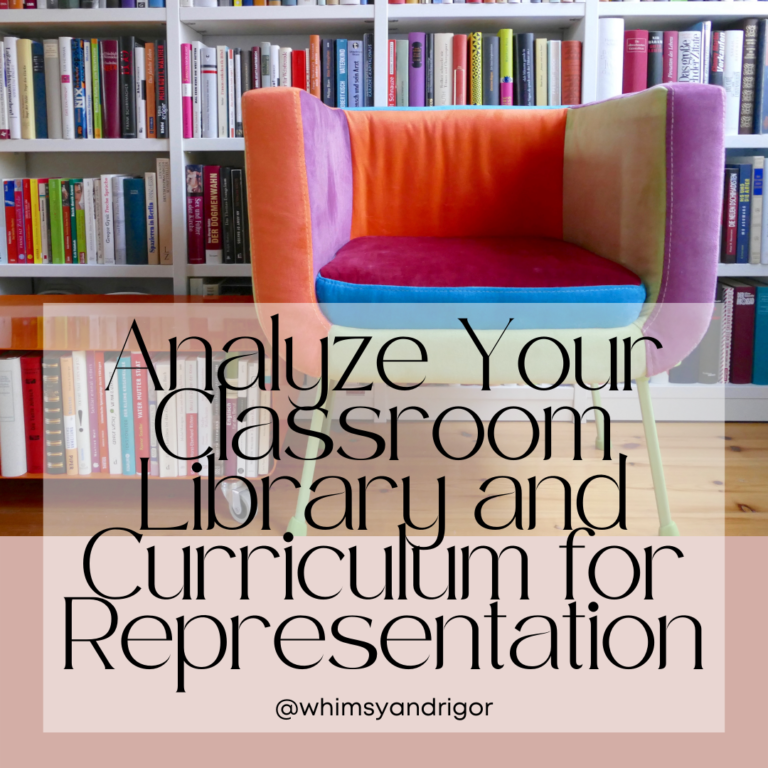
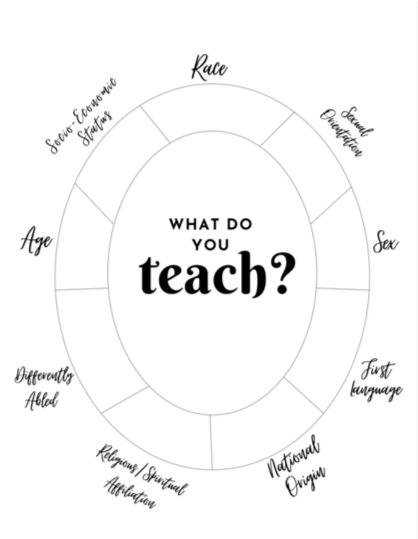
As English teachers, we are often asked “What books do you teach?” or “Do your students read [insert any number of “classic” texts here] because I loved/hated that book as a kid?”
But lately, teachers are asked “Who does your library represent?” and “How many books do you have that feature a BIPOC protagonist?” and “Who writes the books you put into students’ hands?”
For many teachers, these questions can be uncomfortable because it forces us to answer, “Ummm, it looks like my library represents white boys and I teach zero books with a BIPOC as a central character and all of the authors I teach are white…”
Yeah, that got real awkward real quick.
It is time for us to analyze our libraries and curriculum so we can answer “Well, my library represents all of my students because I feature books with Black, Native, queer, white, and deaf protagonists that are part of the #ownvoices movement, so, yeah, my students see themselves in our books.”
This is exactly what Krista from @whimsyandrigor says when she is asked this question and it’s all because of a deep analysis she did with her library and curriculum using a modified social location wheel.
A modified social location wheel is used to analyze the texts we teach, the voices we raise, and the models we hold up. By listing the gender, SES, race, religion, etc. of the characters and authors we teach, educators can see, right on the page, exactly who is OVERrepresented and who is UNDERrepresented (and then take action to balance it!).
Here’s how to use the social identity wheel to find the gaps in your curriculum:
- Gather all of the texts you share with students: whole-class novels, short stories, literature circle selections, First Chapter Friday readings, etc. Get literally everything.
- Dive into that massive stash of Flair pens every teacher has. (Or grab a multitude of pens in different colors.)
- Print out a blank wheel here.
- Choose a text and choose a pen.
After you have analyzed the first text, choose a different book and a different colored pen and continue the process.
When you have finished, step back. What do you see? What do you NOT see? Who is there? Who is missing?
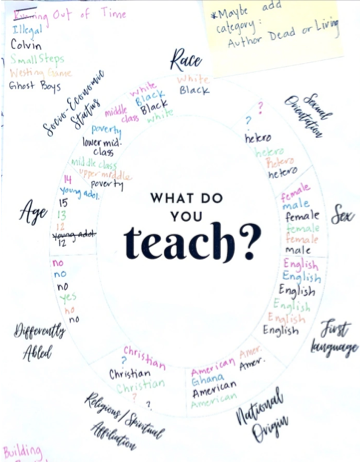
Seeing the fact that all of my texts feature native English speakers or heteronormative characters or predominately female protagonists raises some uncomfortable and provocative questions.
It’s okay to feel ashamed or guilty or embarrassed, but only for a minute. Because now that you know better you can do better, as Ms. Angelou told us.
Here are some IG accounts to explore as you begin to fill those gaps:
@buildingbooklove
@theconsciouskid
@readingisresistance
So who is courageous enough to put the characters from the books they teach to the test? Perhaps after sorting them out into these 9 categories, we will truly see that #weneeddiversebooks is far more than just a hashtag.
Post what you have discovered and what you are changing with the #findthebookgap so we can all cheer you on as you ditch the books with white boys and dogs and replace them with Black and LatinX and queer and Native and non-binary characters.
4. Incorporate humor into your literature studies

Molly from The Littlest Teacher knows that literary study can get a little heavy when story after story has serious themes or is downright sad. One easy way to revamp your lessons for next semester is to plan to incorporate some funny stories in your literature units.
You can group them together as a humor unit and study the literary devices present in humor and the different types of comedy, or you can find stories that fit the other themes and standards of your existing units and sprinkle in humorous short stories as a welcome break from the heavy and serious fare we English teachers seem to have such a penchant for.
Finding quality stories to study can be a challenge. Check out this blog post with a collection of humorous short stories for high schoolers that are appropriate, have literary value, and are available for students to read for free online.
5. Move Poetry Into Lessons Beyond National Poetry Month

Moving poetry into lessons beyond National Poetry Month in April has been the goal for Lesa from SmithTeaches9to12 in recent years.
If you too are looking to incorporate more poetry, think about the big ideas you cover in class and there’s sure to be options to complement what you’re studying. For example, when doing vignettes from The House on Mango Street, use poems about identity, growing up, and home. Check out the free list here. For poems on specific themes check out the find poem section at poets.org.
Consider using poetry to mark seasons and/or special moments of significance with poems – back to school, winter, halloween, and so on. If you’re looking for poems to use throughout the rest of 2022 check out this free poetry e-book. Each month a free lesson is sent out too!
Another idea is to tie poetry to skills – summary writing, grammar lessons, literary analysis/close reading and so much more. You might have students complete a TPCASTT to analyze a poem before making connections, explore a different point of view through compare/contrast activities, or even write their own poetry related to a larger source text such as a novel from the POV of a character or using the same setting.
6. Use the three-part lesson structure
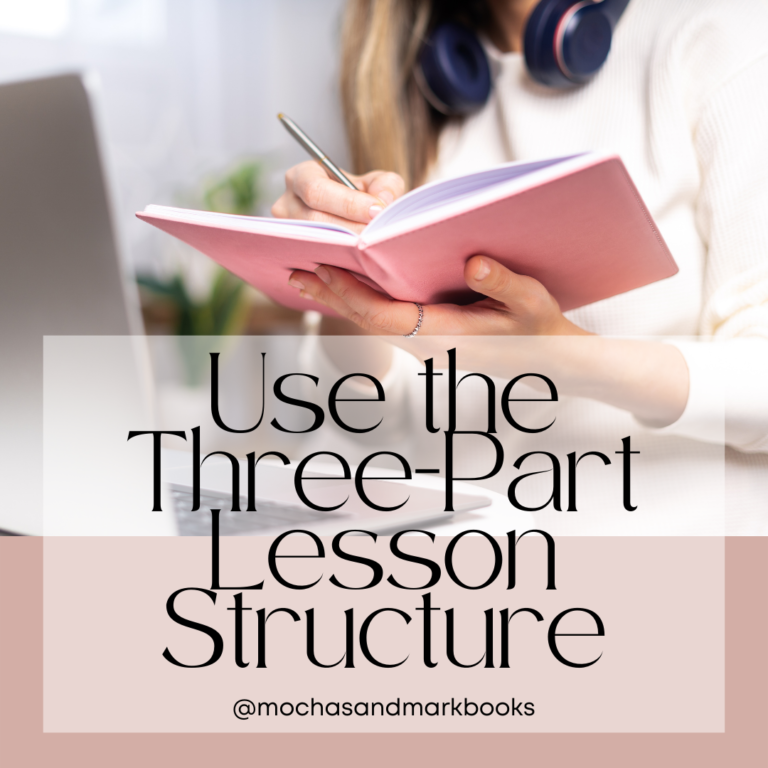
To create a really memorable and effective lesson, students need to be taken on a journey. One that piques their interest and ultimately invests them in the learning experience.
To help craft this journey, I have ensured that all of my lesson plans contain a minds-on, action, and consolidation section. This three-part lesson structure is widely used in mathematics as an inquiry based approach, but is now employed by many teachers across all subject areas, as the format ensures that students are active participants in their learning.
For the minds-on section of the lesson, students are presented with material that should make them think about the topic. Perhaps you want your students to connect with their prior knowledge or to develop an understanding of historical or social contexts associated with a piece of literature.
Materials for minds-on activities for fiction could include:
- A quotation to analyze
- A photograph or painting related to the story – what do you notice?
- Historical or social context learning stations
- A gallery walk containing items related to the story or a specific character requiring inferences to be made about the character
- A news clip related to the story
- A song from the era that the story takes place in
For more ideas on pre-reading activities, check out this blog post on previewing the text, accessing prior knowledge, making predictions, and assessing purpose before reading.
Once students have completed these minds-on activities, they should have some level of interest in learning about how it will connect with the reading. Having this basis of background knowledge will also help students to be more active readers as they will be making connections and inferences while diving into the text.
The action part of the lesson is where students can explore and learn. This is where the text is read, whether independently or as a class, and analysis can take place through close reading strategies or annotation of main ideas.This is also where students are asked to demonstrate their learning in some way, whether through a paper and pencil task or a more creative medium.
Consolidation is the part of the lesson that I found really hard to revamp. Most lessons contain some form of a minds-on activity or lesson hook, and of course the lesson will contain the action portion, but consolidation can often be cut out due to time, or forgotten altogether.
Having a consolidation piece at the end of a lesson is crucial to help students reflect on their learning and develop metacognitive tools to assess their own progress. These activities can also offer teachers a window to gauge student understanding and where more teaching might be required.
Some of my favourite consolidation activities when teaching literature have been:
- Creating character memes that state some form of an observation on a character. Grab this freebie template to get you going!
- Making connections reflection asking students to state a text-to-self, text-to-text, and text-to-world connection with the story
- A quick exit ticket question like, “what is another title that this story could be called?” or “How would this story be different if a specific character wasn’t in it”

7. Help Students Find the Value in Reading
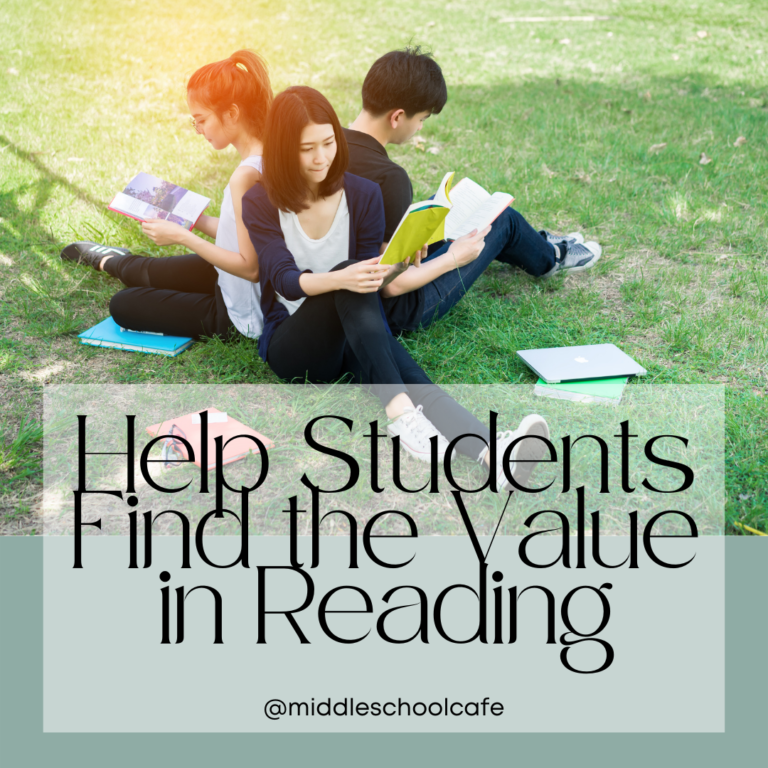
Helping students understand the importance of reading is a struggle for many ELA teachers. Teachers try to motivate students with extrinsic rewards such as grades or candy, but what if you could motivate your students to read because they love reading, they understand the magic that reading can bring to their life? They see value in reading!
Carolyn from Middle School Cafe wanted to incorporate other voices in her class that help students see the value in reading. So many of her students read because they are expected to read for class, but don’t see the value in reading. Without understanding the value, Carolyn knows her students won’t be life-long readers.
To help her students see reading from multiple perspectives, Carolyn switched her reading logs from recording page numbers to weekly reflections. In addition to reflecting on their own reading, students interact with a quote from authors, actors, politicians etc…about the value in reading. Each week students read a quote and reflect on the meaning. Often these quotes spark great conversation about reading. It has taken the discussion about reading from my teacher is making me read, to I [the student] find value in reading.
8. Add opportunities for exploring one’s own community, identity, and history
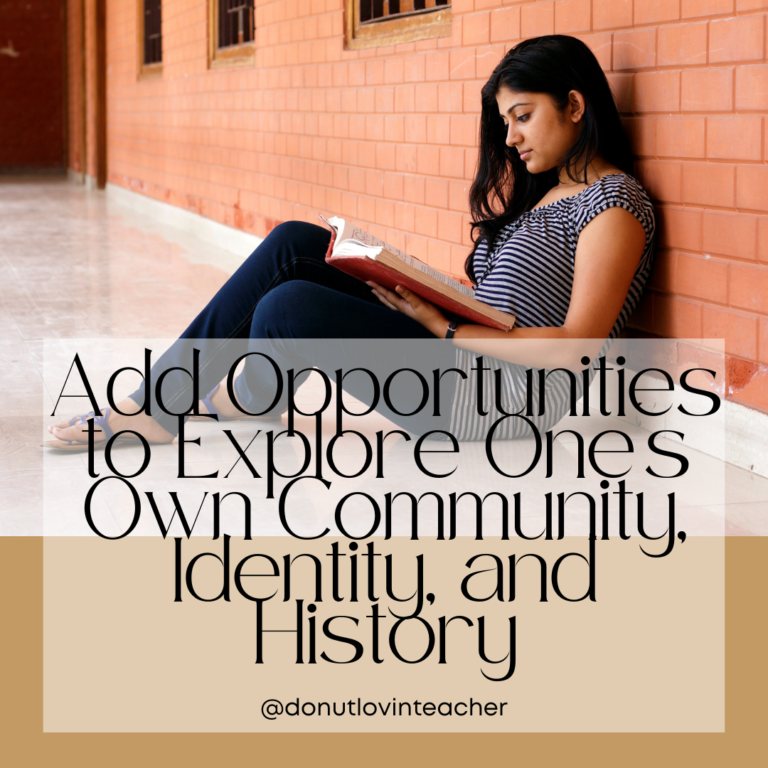
How many of your units, projects, and/or lesson goals are centered around your students learning more about themselves and the people and places around them? Staci from Donut Lovin’ Teacher suggests starting with interviews! Have students interview people in their lives about the community, their experiences, or past events they learned about.
Once students uncover important events that show joy, resilience, and other parameters you put into place, it’s time to create! Here are some ways that you can incorporate these interviews into meaningful writing pieces:
*Try out a Where I’m from Poem to guide students in reflecting on the people, traditions, things, and places that are important to them.
*Have students create a timeline that showcases moments in history that are important to a students’ family/friends. You can also provide guidelines that require students to find out from the adults in their lives about a specific time period from a text you’re reading.
*After finding out about a specific event in history, students conduct research and write a narrative in text or using a “comic book” template based on that particular setting and conflicts.
Most recently, Staci challenged students to conduct interviews and then create an artifact that would honor the past. Students’ creations ranged from learning Chopin’s Minute Waltz, to creating replicas of important places, and designing monuments to memorialize certain events or people. One of the best comments she heard throughout their work was a student exclaiming, “Miss! I learned so much about my grandpa! I had no idea he lived through all that!”
9. Find Creative Ways to Teach Tough Content
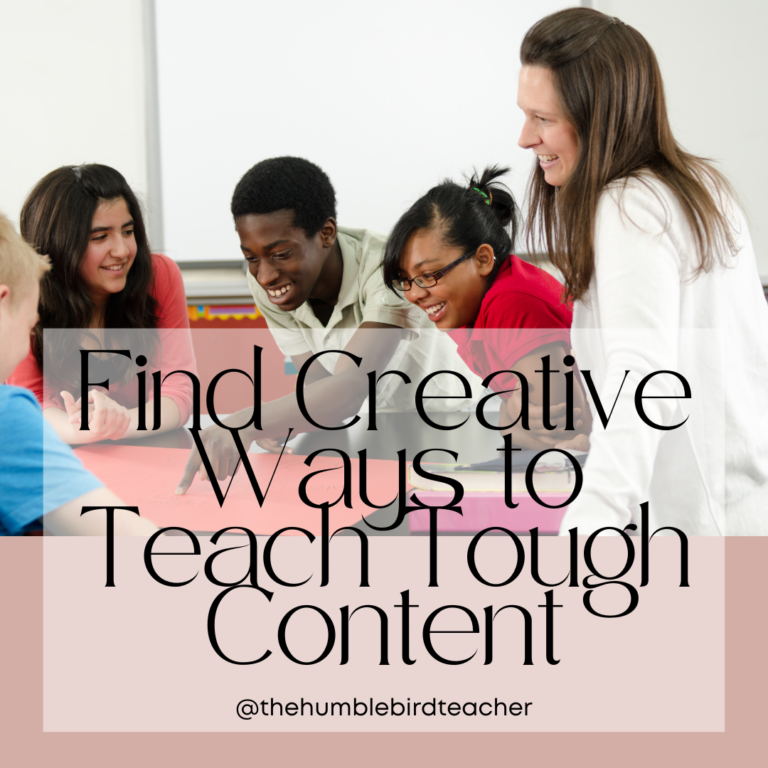
In order to prepare for the new school year, Sharena, The Humble Bird Teacher, looks for creative and engaging ways for students to learn tough topics. She follows the following method: trash, keep, and create. Trash the lessons that did not work for you and your students. Keep the ones that worked. Create new content that will keep your students engaged. If you aren’t a creator then search for fun and engaging lessons for hard topics online.
One difficult topic Sharena revamped over the summer to prepare for the next school year was plot. Many students struggled with this objective, so Sharena created a lesson on plot using the theme song from the Fresh Prince of Bel-Air. This lesson was a huge success with students and teachers! Although it was a show from the 90’s, many students had heard of it through their parents. It has also picked up popularity due to the new version of the show. As a result, many students had the opportunity to see it on different streaming services. Taking this lesson and revamping it for student engagement helped students remember and understand plot. If you are interested in this lesson, you can check it out here.
10. Incorporate One-Pagers
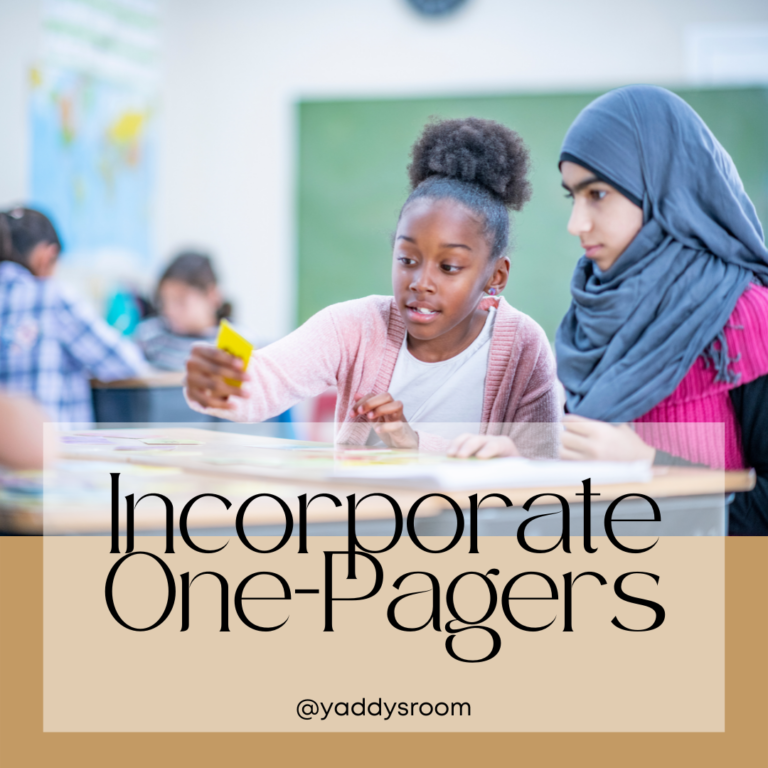
When it comes to revamping lessons for the new school year, Dr. Yaddy Walantas from Yaddy’s Room has made it a goal to incorporate more one-pagers into her curriculum. One-pagers are an amazing resource for teachers of any subject and allow students to make their thinking visible in a way that is more intuitive than an end of unit essay or exam.
A one-pager is a culminating activity where students can demonstrate their learning using color, images, and text. For example, in this one pager for Edgar Allan Poe’s “The Raven” students use a template with a Raven already printed on it and get relevant quotes and words from the poem to show what the believe the overall tone and message of the poem is. Students are allowed to get creative and use color to emphasize their point, which can be a great opportunity for discussing tone in visual media as well.
For one-pagers, Yaddy likes to set parameters and provide the option to students to use templates, like the ones for these Martin Luther King Jr One Pagers, or allow students to look at the academic requirements and start from a blank page. Using templates is a great way to get students who may be intimidated by a blank page or feel like they are not an artist to feel more comfortable.
11. Use Audiobooks in your classroom
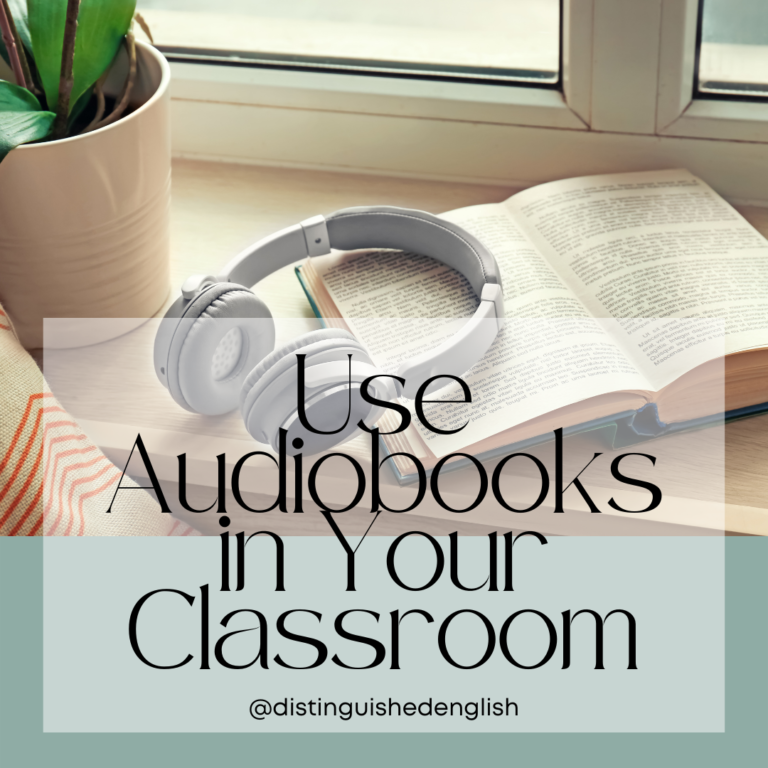
There is some debate among English teachers whether or not audiobooks count as “real books,” but Olivia from Distinguished English is unapologetically in favor of the audiobook. Maybe you also love audiobooks but aren’t sure how to incorporate them in your English classroom? If so, you’re in luck. Here are a few ideas for successfully using audiobooks in your classroom next year:
- Create an Audible or Libby account and dedicate a classroom device to audiobook listening during independent-reading time. (Audible is a paid membership, but Libby is free through the public library.)
- Give your students time to record their own audiobooks. In the younger grades, students get a lot of support for their oral-reading skills, but by the time they reach us, they’re often on their own. Olivia has her students record one chapter of an audiobook each week so she can assess their oral reading and offer the support they need.
· Take advantage of audiobooks when teasing new books to your students. Olivia has six literature classes each day, and sometimes her voice is shot by the end of the afternoon. With audiobooks, she can take a break from reading and still expose her students to a wide variety of literature.
12. TEACH ELA CONCEPTS THROUGH MUSIC
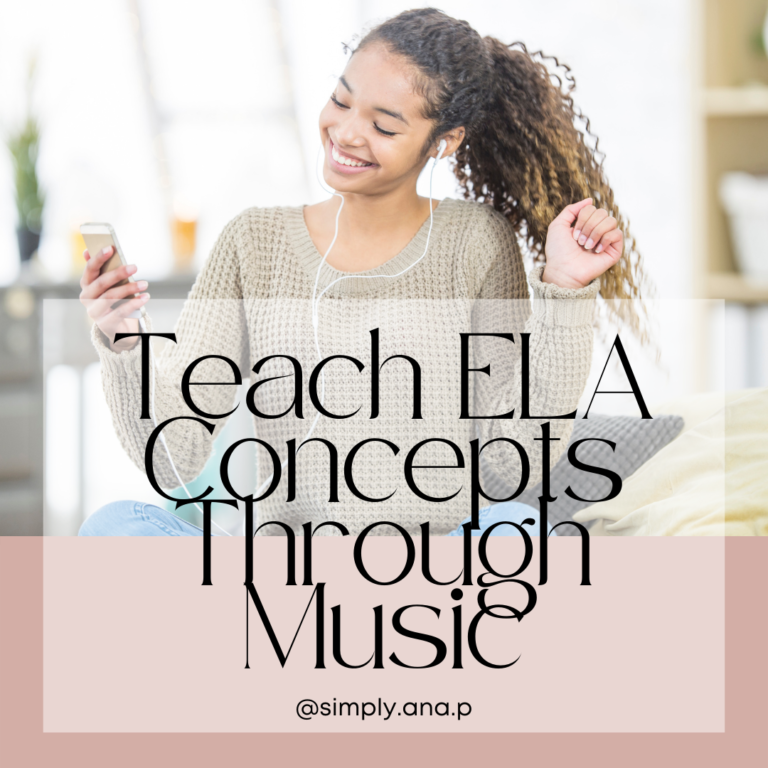
If there’s something that most high school kids love, it’s music. As a huge music head herself, Simply Ana P relates to them in this aspect, and understands the earphone/airpod addiction. One day she thought to herself, ‘why not use this to my advantage?’
If there’s something that most high school kids hate, it’s poetry. And here’s where the merger takes place 🙂
Ana wanted her kids to love the poetry unit as much as she did, and she knew that to accomplish this, a relatable connection had to be made, so she started by handing out music lyrics to review figurative language devices and poetic elements.
The excited comments started – “Is this Kanye West?!” / “Miss, what do you know about Drake?” / “Ew, who listens to Katy Perry?!” – and the engagement finally set in. Ana learned to work with the current instead of against it, and she highly recommends music in the classroom for any ELA lesson you can find.
Trying to help students truly learn the differences between figurative language devices?
Need to review theme?
- Use music in addition to short stories and picture books.
Looking for a way for students to show their comprehension/analysis of a text?
- Allow them to connect the text to music (connecting text evidence to applicable song lyrics).
Want to spice up a creative writing task?
- Play musical chairs writing for half a class period – instructions here
In whatever capacity you choose to use music in the classroom, be brave to think outside of the box, learn what works best for your particular classes with trial and error, and ask your students for their input/interests when putting these lessons and activities together. Don’t be afraid to jingle to your own tune 🙂
I’d love to hear which of these ideas you plan to try next year. Leave a comment below!
Leave a Reply Cancel reply
© Mochas and markbooks 2025 | Template by Waymaker Designs |